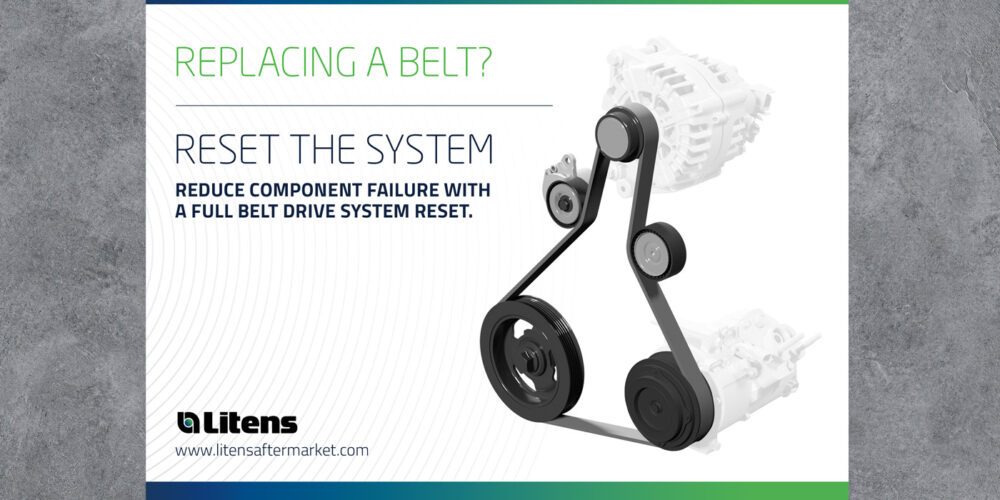Litens Aftermarket introduced its new “System Reset” campaign, aiming to bring awareness to the importance of proper drive-belt system maintenance.
In an effort to educate professional vehicle service technicians, Litens details what a system reset entails, its significance and the potential repercussions of neglecting this essential maintenance step when replacing a drive belt.
For a belt-drive system to perform optimally, the system’s components must be properly maintained and in tune with each other throughout the lifespan of the vehicle. When it’s time to replace the drive belt, it’s also time to replace the drive-belt system’s tensioners and pulleys. The system is properly reset when all components of the belt-drive system, including the tensioner, idler pulley(s) and the belt, are all replaced at the same time.
“As vehicle belt-drive systems become more complex, we’re aiming to equip technicians with both education and solutions,” said Scott Howat, national sales manager, Litens Aftermarket. “Properly resetting the belt-drive system enables the technician to reset the vehicle to its optimal OE level of performance.”
Benefits of a system reset – replacing the tensioner and idler pulley(s) along with the belt – include enhancing the system’s reliability and longevity, as well as reducing the risk of component failure and subsequent breakdowns. Resetting all of the belt-drive system components together promotes optimal power transmission, minimizing slippage and improving overall efficiency, which can contribute to enhanced fuel economy and performance.
Failing to fully reset the system can lead to imbalanced stress distribution, reduced overall system efficiency and premature wear of both the newly replaced parts and the remaining older components. This could result in increased friction, potential belt slippage and an elevated risk of component failure, ultimately compromising the entire belt-drive system’s reliability and performance.
Litens designs OE belt-drive systems and components to last for a designated period of time. While that number also depends on miles driven and the number of vehicle starts/stops, the belt-drive system typically runs for 100,000 miles before needing maintenance. As all of the system’s components are designed to work together, when the belt is due for replacement, it’s highly likely that the rest of the components in the system are also due.
For more information, visit https://www.litensaftermarket.com/.













